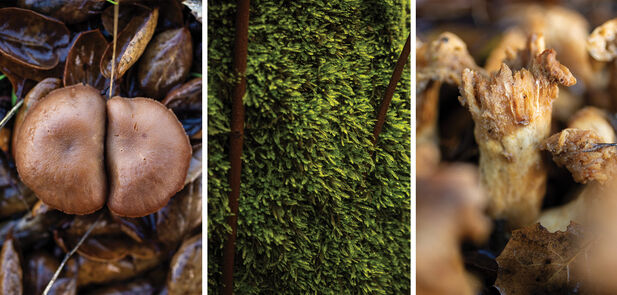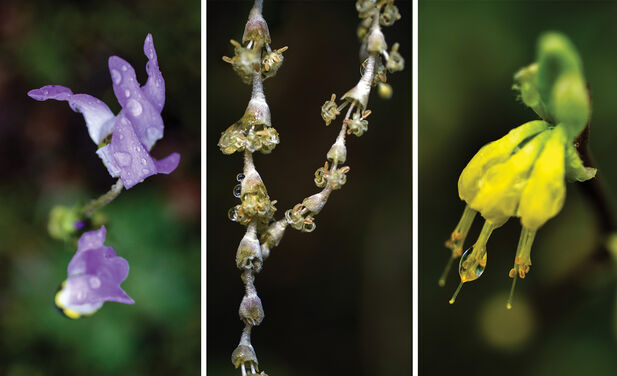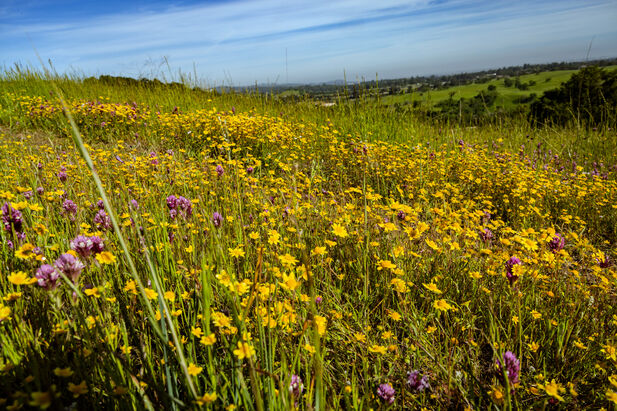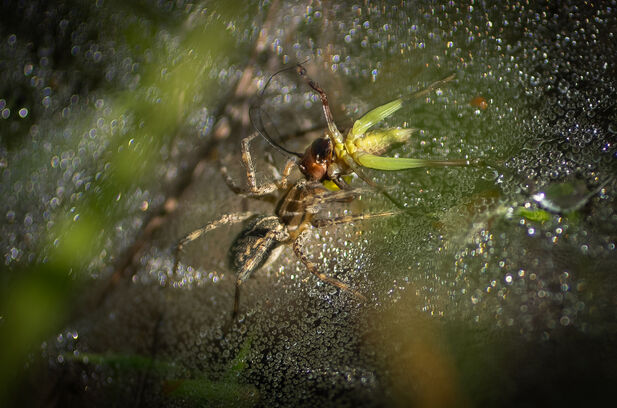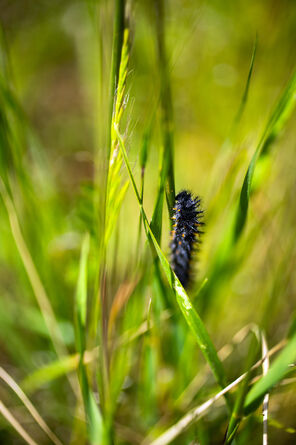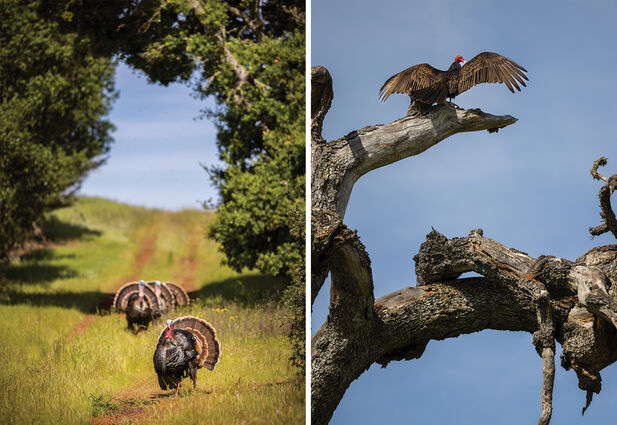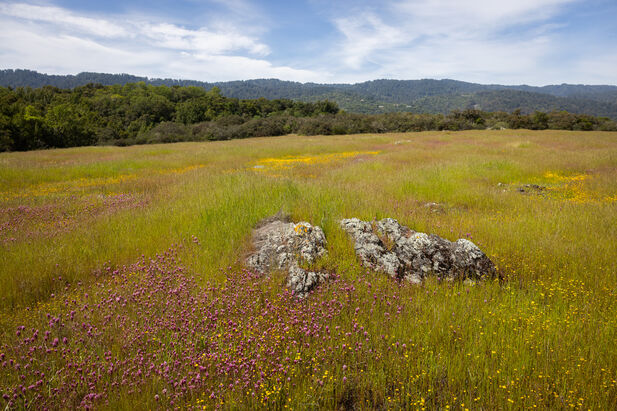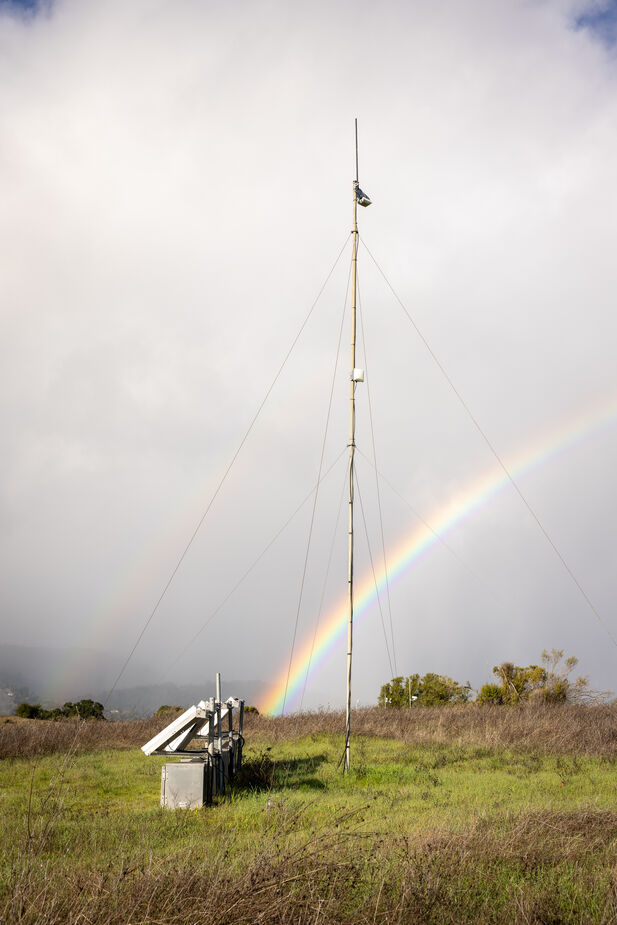
Two seasons on Jasper Ridge
At Stanford’s Jasper Ridge Biological Preserve ('Ootchamin 'Ooyakma), part of the School of Humanities and Sciences, a hike in February and one in April paint different pictures. The grays of clouds and rain and the browns of mud and leafless trees dominate the winter palette, and it is easy to forget that some things are in their element in the wet season. Fungi arise, moss turns green, and rainbows offer hope for the vernal colors to come. In spring, sunshine illuminates the greens, yellows, and purples of grasses, wildflowers, and leaves that welcome pollinating insects and strutting wild turkeys.
But the story of spring’s bounty begins long before winter’s rains. The nutrient-poor serpentine rock that underlies parts of the preserve formed over millions of years in Earth’s mantle and squeezed up to the surface in patches along the San Andreas Fault. Wildflowers adapted to grow in the harsh serpentine soil, and it helped them resist the advance of invasive European grasses that has replaced many native plants. The native wildflowers are as much a connection to the past as an indicator of a specific point in the natural cycle. The seasons roll on at Jasper Ridge.


